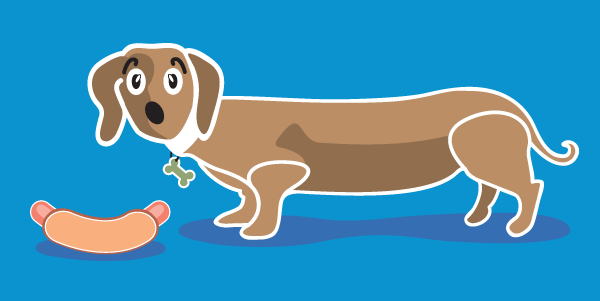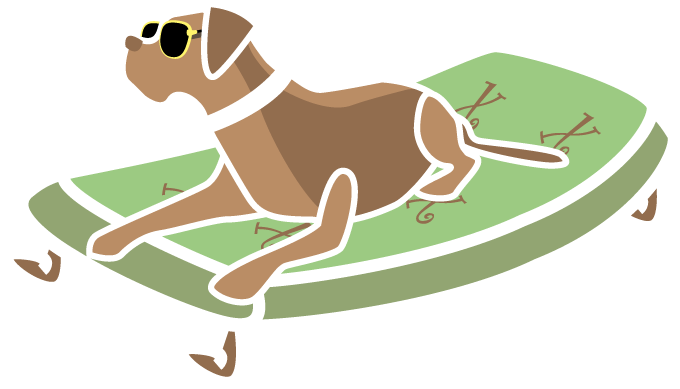 Counter-Conditioning
Counter-Conditioning
Dogs who salivate before even getting in the car are anticipating motion sickness or are exhibiting generalized anxiety to getting into a vehicle. For dogs who are not experiencing motion sickness while traveling but are instead salivating, panting, pacing, barking, having diarrhea and so on, counter-conditioning can help alleviate the anxiety associated with travel.
STEP ONE: Start by getting your dog accustom to whatever restraint device your have chosen. Put the seatbelt on your dog and feed her supper then take it right off, feed your dog in the travel crate and then take him out or put the car barrier in a doorway and feed your dog behind it. Do this every meal for three or four days or until your dog appears relaxed and comfortable. With some dogs this may take several weeks.
STEP TWO: Once your dog is comfortable with the restraint device, feed your dog in the car using the restraint device and immediately take your dog out of the car. Do this every meal for three or four days or until your dog appears relaxed and comfortable. With some dogs, this may take a week or more.
STEP THREE: When your dog is comfortable eating in the car using the restraint device - sit in the front seat and leave your dog in the device after she finishes eating for five minutes. Do this every meal for a week.
STEP FOUR: Add two minutes of time per meal after your dog finishes eating. If your dog shows any anxiety reaction go back to five minutes and add one minute a day. Once you have reached twenty minutes in the restraint device after eating you can proceed to step five.
STEP FIVE: Feed your dog in the restraint device and then drive down the block. Park your car and walk your dog home. Do this every day for a week.
STEP SIX: Drive your dog somewhere close, but fun. A neighbor’s yard, local park, or other enjoyable destination. Walk your dog home. Repeat daily for a week.
STEP SEVEN: Drive your dog further each day but try and include a drive through where you can purchase a “munchkin™”, chicken nugget or other very high value treat. Many banks and gas stations will also give you a biscuit for your dog. This is a valuable lesson for your dog – sometimes there’s great food while driving!
STEP EIGHT: Gradually lengthen the car rides.
STEP NINE: Drive to your veterinarian’s office on day when you DO NOT HAVE an appointment. Take your dog in, give them a treat, and go home. You may want to call your veterinarian and ask permission to do this.
STEP TEN: Enjoy having your dog with you in the car!

 Motion Sickness
Motion Sickness
Most dogs have a window of time prior to getting motion sick. For some dogs it may be four minutes and others may have twenty minutes or longer. In addition to the suggestions above, once you have figured out your dog’s window, take trips shorter than your dog’s threshold. Try and make it some place fun like the park, to play with a dog they like, or to some place they can get a special treat! Every trip you take where your dog doesn’t get sick and has fun is like money in the bank. Your dog learns that car travel is enjoyable. And most puppies outgrow motion sickness before they turn a year old.
Avoiding car travel because your dog gets motion sickness may set up a situation where your dog develops car anxiety. It is better to take frequent, short, enjoyable trips so your dog has the chance to overcome their sensitivity or anxiety.
With practice any dog can get better about car travel. And most dogs learn to love going for a ride – if only to be with you!
Thanks for asking and remember:
Train your dog – enjoy your dog!

Copyright © Susan D. Greenbaum





 Why Bother?
Why Bother? How to Travel?
How to Travel? Which Restraint to Use?
Which Restraint to Use?
 Counter-Conditioning
Counter-Conditioning Motion Sickness
Motion Sickness




